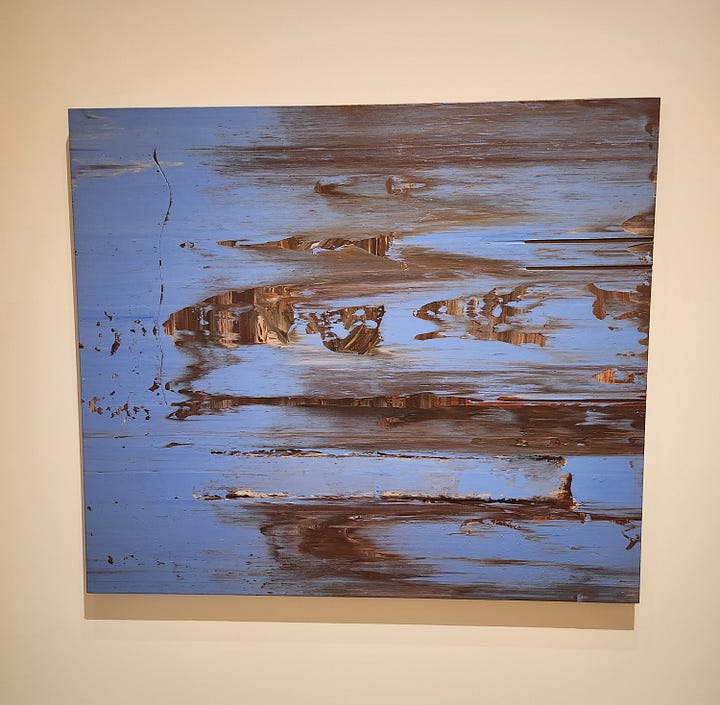Jack Whitten: The Messenger
One of the most innovative artists of our time at MoMA
When I read Holland Cotter’s effusive review of the exhibit “Jack Whitten: The Messenger” in The New York Times in late March, it really struck me. And while Holland Cotter is definitely not afraid to wax poetic regarding art he deems exceptional, the tone of the review of this retrospective of Whitten struck me dumb.
Not as in speechless, and the review itself was very far from dumb, but I felt pretty dumb, or at the very least, woefully underinformed. How could an artist as inventive and exceptional as Jack Whitten was, have flown under my own personal radar for decades?
That was my loss, but thanks to MoMA (and HT to Holland Cotter), it’s now my boon.
When we were in NYC earlier this month, we expressly timed our trip to coincide with the preview of Hilma af Klint’s “What Stands Behind the Flowers” at MoMA. So, if you’re planning to see that exhibit, be sure to go before August 2, when the Whitten show closes. You can thank me later.
An endlessly inventive artist, Whitten worked in various mediums and fashioned his own tools to create his work. Cotter writes, “Whitten called every studio he worked in a ‘laboratory,’ and every piece of art he made an ‘experiment.’ And, indeed, much of what’s in the show challenges ready definition.”


In addition to creating tools to make his art, Whitten also made his own medium. Using acrylic paint that he let dry and then cut into tesserae, he created these huge, gorgeous, detailed works that hang in the galleries on MoMA’s 6th floor. Some tessera are opaque, others translucent, but collectively, they are alchemized into abstracted compositions that you can feel. Like in your bones.
Whitten in his own words:
My use of tesserae is based on an ancient method of painting which originally used stone, glass, seashell and other material for color…My acrylic tesserae encode visual information, but unlike the computer [pixel] this information is organic…The pattern is molecular, one-hundred percent holistic and uses both Euclidean and Fractal geometry as structure. It is multidimensional armature representing a multidimensional space, infinite in all directions.
No where in this exhibit is that more apparent than Witten’s “9.11.01” (below), a piece he created after personally witnessing the collapse of the Twin Towers on 9/11. In addition to the acrylic tesserae, the work includes glass and metal shards, ash, and animal blood—a physical testament to the horror of 9/11.
Whitten also used photocopy toner on paper to create the images like those below, which definitely lends a photographic quality to them.
There are also carved wooden sculptures throughout the galleries that he embellished with all manner of items, including nails. Whitten wrote, “It is the fusion of spirit and matter in African Art recognizable by its characteristic physicality that ultimately informs the intellectual and emotional content of my work.”
Truth told, I could go on and on, but the best way to appreciate the work of the supernova American artist Jack Whitten is to be sure to catch this exhibit yourself. And don’t let my so-so photos dissuade you. You will feel his message when you see the work.







